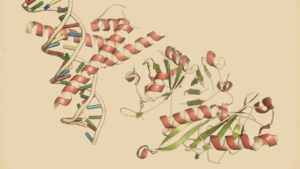Gut Obstruction Symptoms: A Comprehensive Guide
Learn about the signs and gut obstruction symptoms in this comprehensive guide. Identify potential issues early for better health.

Are you experiencing gut obstruction symptoms? It's important to recognize the signs and symptoms of a potentially serious condition that could affect your digestive system.
Whether you're a health enthusiast, a patient, a parent, or just a curious reader, this blog post will provide you with valuable information about gut obstruction symptoms.
Let's dive in and explore what you need to know about this concerning issue.
1. Gut Obstruction Definition
1.1 What is Gut Obstruction?
Gut obstruction, also known as intestinal obstruction, is a medical condition that occurs when there is a blockage in the digestive system.
This blockage can happen in various parts of the intestines, preventing the normal passage of food, fluid, and gas.
It can be caused by factors such as tumors, adhesions, hernias, or inflammation.
Gut obstruction can lead to severe abdominal pain, vomiting, constipation, and distension. If left untreated, it can result in bowel perforation, infection, or tissue death.
2. Who is Most Likely to Develop Gut Obstruction Symptoms?
Symptoms of gut obstruction are indications of a blockage in either the small or large intestine, hindering the passage of food or liquids.
This condition can give rise to severe complications, including infection, tissue necrosis, and bowel perforation.
2.1 Risk Factors for Gut Obstruction
Gut obstruction can affect individuals of any age, but certain factors may increase the likelihood of developing symptoms.
Individuals who have undergone abdominal surgery or have a history of abdominal adhesions are at a higher risk.
Additionally, people with conditions such as Crohn's disease, diverticulitis, or intestinal tumors may be more prone to experiencing gut obstruction symptoms.
It is important to be aware of these risk factors and seek medical attention if you notice any concerning symptoms.
| Risk Factor | Characteristics |
|---|---|
| Age | Gut obstruction is more common in older adults, especially those over 60. |
| Family history | If a close family member has had gut obstruction, your risk may be higher. |
| Undergone abdominal surgery | Previous abdominal surgery can increase the risk of adhesions, which can cause gut obstruction. |
| Disease condition | Certain conditions such as Crohn's disease or cancer can increase the risk of gut obstruction. |
Individuals who have a family history of gut obstruction or a genetic predisposition to digestive disorders may also be more susceptible to developing symptoms.
Furthermore, age can play a role, with older adults being at a higher risk due to the natural wear and tear on the gastrointestinal system.
Certain lifestyle factors, such as a sedentary lifestyle or a diet low in fiber, can contribute to the development of gut obstruction symptoms as well.
Overall, it is crucial to be mindful of these factors and take proactive steps to maintain a healthy digestive system.
Additionally, individuals who have undergone abdominal surgeries or have a history of abdominal adhesions may be more prone to developing gut obstruction symptoms.
It is important to disclose any relevant medical history to your healthcare provider to ensure proper diagnosis and treatment.
Furthermore, certain medications, such as opioids or anticholinergic drugs, can slow down the movement of the intestines and increase the risk of gut obstruction.
It is crucial to be aware of the potential side effects of medication and consult with a healthcare professional if you have concerns.
Lastly, maintaining regular bowel movements and staying hydrated can help prevent constipation and reduce the risk of gut obstruction.
Remember to listen to your body and seek medical attention if you experience persistent or severe symptoms.
3. Common Causes and Complications of Gut Obstruction
Understanding the common causes and potential complications of gut obstruction is vital for individuals to recognize the significance of this condition. Gut obstruction occurs when there is a blockage in the digestive tract, preventing the normal flow of food, fluids, and waste. This condition can affect individuals of any age or gender, but certain factors may increase the likelihood of developing symptoms.

3.1 Causes of Gut Obstruction
Common causes of gut obstruction include:
Adhesions: These are bands of scar tissue that form between abdominal tissues and organs, often as a result of previous surgeries or infections. Adhesions can cause the intestines to become twisted or blocked.
Hernias: A hernia is a protrusion of an organ or tissue through a weakened area in the abdominal muscles. In some cases, a hernia can lead to gut obstruction if the intestines become trapped or strangulated within the hernia.
Tumors: Both benign and malignant tumors can cause gut obstruction by physically blocking the passage of food or fluids through the digestive tract. Tumors may arise within the intestines or from nearby organs.
3.2 Potential Complications
Potential complications of gut obstruction include:
Bowel Perforation: If the blockage is not relieved, the pressure within the intestines can build up, leading to bowel perforation. This is a serious condition that allows the contents of the intestines to leak into the abdominal cavity, potentially causing infection and other complications.
Malnutrition and Dehydration: When gut obstruction prevents the proper absorption of nutrients and fluids, individuals may experience malnutrition and dehydration. These conditions can weaken the body and negatively impact overall health.
Infection: In some cases, gut obstruction can lead to bacterial overgrowth or infection within the digestive tract. This can result in symptoms such as fever, abdominal pain, and sepsis if left untreated.
Understanding the common causes and potential complications of gut obstruction is crucial for individuals to recognize the importance of early detection and prompt medical intervention. If you experience persistent or severe gut obstruction symptoms, it is recommended to seek immediate medical attention to prevent further complications.
4. When to Seek Medical Attention for Gut Obstruction Symptoms
Seeking medical attention for gut obstruction symptoms is crucial for timely diagnosis and appropriate treatment. It is important to be aware of the signs that indicate the need for immediate medical intervention.

4.1 Recognizing the Signs
Here are some common symptoms and how to recognize them:
| Symptom | Recognition |
|---|---|
| Severe abdominal pain | Pain that is persistent and intensifies over time |
| Nausea and vomiting | Frequent and uncontrollable vomiting, accompanied by nausea |
| Bloating and distension | Abdominal swelling and discomfort |
| Inability to pass gas or stool | Difficulty in passing gas or having a bowel movement |
| Loss of appetite | Decreased desire to eat, resulting in weight loss |
5. Location of Gut Obstruction in the Digestive Tract
Gut obstruction can occur at various locations in the digestive tract, including the small intestine, large intestine, or even in specific areas like the colon.
5.1 Understanding the Blockage Sites
The causes of gut obstruction can be diverse, ranging from mechanical blockages such as tumors or adhesions to functional issues like muscle dysfunction. Understanding the location of the obstruction is essential as it can impact the symptoms experienced and determine the appropriate treatment approach.
The location of a gut obstruction can affect the symptoms and treatment options. For instance, an obstruction in the small intestine may cause rapid-onset severe pain and vomiting, while a blockage in the colon may lead to more gradual symptoms like bloating and constipation. Treatment options may vary depending on the location and severity of the obstruction and may include non-invasive measures, medications, or even surgical intervention.
Remember, if you experience persistent or severe gut obstruction symptoms, it is crucial to seek immediate medical attention to prevent further complications.
6. Variation of Gut Obstruction Symptoms by Type and Location
Write a section that introduces the Variation of Gut Obstruction Symptoms by Type and Location. the section should include a markdown table giving Types of Gut Obstruction and Their Symptoms; listing symptoms Based on each Location of gut obstruction. A paragraph explaining the benefits of categories about knowing symptoms with the following location will help a lot in treatments, helping get a full understanding of their condition
6. Variation of Gut Obstruction Symptoms by Type and Location
Understanding the variation of gut obstruction symptoms by type and location is essential for effective treatment and a comprehensive understanding of the condition.
By categorizing symptoms based on the specific location of the obstruction, medical professionals can determine the most appropriate course of action.
This knowledge enables tailored treatments, resulting in better outcomes for patients.
Additionally, identifying specific symptoms for each type of gut obstruction allows for accurate diagnosis and targeted interventions.
This approach enhances patient care and improves the overall management of gut obstruction cases.
6.1 Types of Gut Obstruction and Their Symptoms
Gut obstruction symptoms can vary depending on the type and location of the obstruction. Here are some possible variations:
- Small bowel obstruction usually causes crampy abdominal pain that comes and goes, nausea, vomiting, abdominal distention, constipation, diarrhea, and lack of gas. The pain is often in the middle or upper abdomen. The symptoms may be more severe and persistent if the obstruction is complete. A complete small bowel obstruction can also cause fever and rapid heartbeat.
- Large bowel obstruction usually causes crampy pain in the lower abdomen, especially on the left side, lower abdominal distention, inability to have a bowel movement or pass gas, chronic constipation, narrow stools, nausea, vomiting, and loud or rumbling bowel noises. The symptoms may be more gradual and less intense than a small bowel obstruction1. A complete large bowel obstruction can also cause blood in the stool.
- Intestinal pseudo-obstruction can cause signs and symptoms similar to a physical obstruction but without any actual blockage. The symptoms may include abdominal pain, nausea, vomiting, bloating, constipation, diarrhea, and lack of gas. The cause of this condition is a problem with the muscle or nerve function of the intestines.
6.2 Symptoms Based on the Location
The symptoms of gut obstruction can vary depending on the location of the obstruction.
| Location | Symptoms |
|---|---|
| Small bowel obstruction | Abdominal pain and cramping, nausea and vomiting, bloating, constipation, inability to pass gas |
| Large bowel obstruction | Abdominal pain and cramping, nausea and vomiting, bloating, diarrhea, ribbon-like stools |
7. Diagnosis and Treatment of Gut Obstruction
Gut obstruction can be diagnosed through various methods, including imaging tests such as X-rays, CT scans, and MRIs, as well as physical examinations and medical history reviews.
Treatment options for gut obstruction depend on the severity and underlying cause of the obstruction.
Non-surgical treatments may include medication, dietary changes, and bowel rest.
Surgical interventions, such as bowel resection or bypass, may be necessary in more severe cases.
The appropriate course of treatment will be determined by a healthcare professional based on individual circumstances.
7.1 Diagnostic Procedures
To diagnose gut obstruction, doctors usually perform a physical exam, ask about the medical history and symptoms, and order some imaging tests.
The most common imaging tests are abdominal X-ray and computed tomography (CT) scan, which can show the presence and level of obstruction, as well as the cause and possible complications.
Sometimes, other tests such as ultrasound, air or barium enema, or blood tests may be done to confirm the diagnosis or rule out other conditions
Diagnostic Methods:
- Imaging tests (X-rays, CT scans, MRIs)
- Physical examination
- Medical history review
7.2 Treatment Options
The treatment of gut obstruction depends on the severity and type of obstruction. In some cases, nonoperative management may be sufficient.
This involves intravenous fluid resuscitation to correct dehydration and electrolyte imbalance, nasogastric decompression to relieve abdominal swelling and vomiting, bowel rest to allow the obstruction to resolve, and antibiotics to prevent or treat an infection.
However, if the obstruction is complete or complicated by vascular compromise, perforation, or infection, surgery may be required to remove the blockage and repair any damage.
The type of surgery depends on the cause and location of the obstruction.
For example, adhesions, hernias, tumors, diverticulitis, volvulus, intussusception, and fecal impaction may require different surgical approaches.
Treatment Options:
- Medication
- Dietary changes
- Bowel rest
- Surgical interventions (bowel resection, bypass)
This comprehensive approach to the diagnosis and treatment of gut obstruction ensures effective patient care and improves the overall management of these cases.
Frequently Asked Questions
Do you still poop if you have an obstruction?
How do you clear a blocked gut?
1. Increase fluid intake: Drink plenty of water to soften the stool and promote regular bowel movements.
2. Increase fiber intake: Consume fiber-rich foods like fruits, vegetables, whole grains, and legumes to add bulk to the stool and facilitate bowel movements.
3. Exercise regularly: Engage in physical activity like walking or jogging to stimulate the muscles in your intestines and promote smooth bowel movements.
4. Use natural laxatives: Incorporate natural laxatives like prune juice, aloe vera juice, or herbal teas (such as senna or dandelion) to help relieve constipation.
5. Take over-the-counter remedies: Consider using over-the-counter options like stool softeners, fiber supplements, or gentle laxatives to help clear the blockage.
6. Seek medical advice: If the above remedies do not provide relief or if you experience severe symptoms, it is advisable to consult a healthcare professional for further evaluation and guidance.
Please note that if you have a severe blockage or persistent symptoms, it is important to consult a healthcare professional for proper diagnosis and treatment.
What is the most common cause of intestinal obstruction?
What are the most cardinal symptoms of intestinal obstruction?
Review date not set.
How we reviewed this article:
Latest on:





